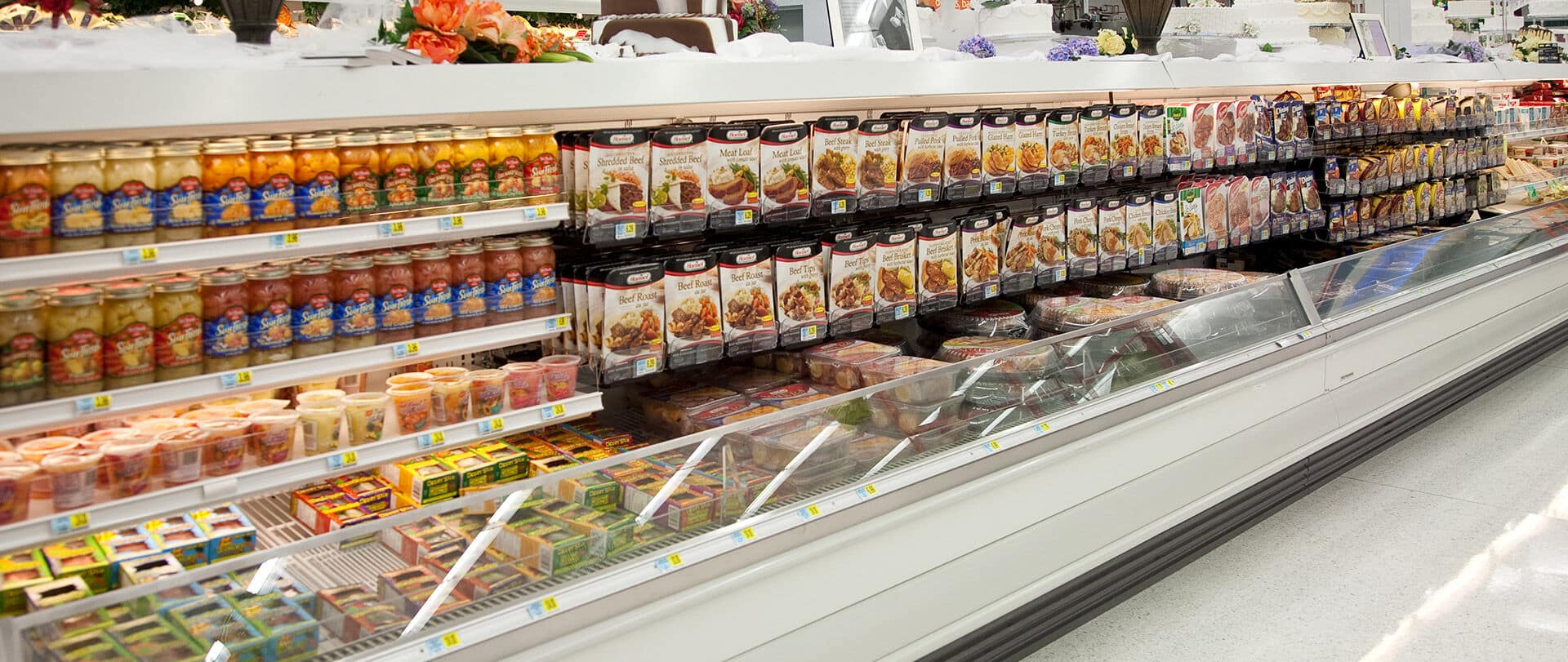Pop-up Kitchens Put Food Back in the Spotlight
Modern supermarkets bring new demands -- perimeter planning, shopper engagement, shrink management, and more. When attention is divided into so many areas it’s easy to forget who the star of your store really is — the food! Shoppers come to your store simply seeking foods they can easily purchase and eat. It’s time to put food back in the spotlight and pop-up kitchens may be the solution you’ve been seeking. The back of your store is no place for all the food, especially when it comes to prepared meals. Gone are the days of shoppers being content with picking up [...]
Market Trends – HIGH-VOLTAGE CAKE DESIGN – Choosing a Display to Make It Shine
The opportunities to share images offered by social media sites and apps like Snapchat, Pinterest, and Facebook create an insatiable demand for new content, and one consistent object of users’ interest is expected to attract even more attention this year — cakes. New decorations and designs will incorporate influences from both modern technology and 80s nostalgia. The holidays are a time of the year where inspiration is most sought after. “If you look at platforms like Instagram and Pinterest, one of the most popular categories of ‘pins’ is cakes,” says Tom Vierhile, innovation insights director at research firm Canadean, which [...]
Grab-and-Go Packaging – Convenience is King
As busy lives get busier, more consumers are moving away from traditional meal times and toward unscheduled snacking that can occur at any time of day. They’re increasingly interested in snacks with the same high level of quality and freshness they expect from other prepared foods, and that creates opportunities for retailers. Fresh packaged snacks are a space where restaurants and convenience stores can’t easily compete. A snack program can be expanded with limited space, and repackaging existing food offerings in snack portions can build on your existing processes. Value can be added to simple snacks using fresh ingredients or [...]
Promoting Healthy Meal Options in Fresh Prepared Departments
Unique food merchandising displays elevate a supermarket’s fresh prepared, deli and bakery departments. These displays help sell the delicious and savory products retailers pride themselves on creating, but also give shoppers a taste of something new and different that they may not normally eat or buy. The IDDBA 19 Show and What’s in Store Live Booth offered creative merchandising ideas for retailers to bring back to their stores and put into action! So, when they showcased the front of the deli with 16’ of Hilphoenix SMG service cases focused on life-changing eating programs such as Keto, Vegan, Whole 30 and [...]
Your customers should understand sustainable refrigeration just enough to care
By Keilly Witman KW Refrigerant Management Strategy LLC The difference between mediocre communication and compelling communication lies in your message’s credibility, appeal, relevance, and distinctiveness. However, just like in refrigeration, when you fail to look at the whole picture, you wind up changing certain elements only to bring others out of whack. You lower your head pressure to save energy, but in doing so you lose heat reclaim capacity, which uses more energy, which brings you right back to square one. Similarly, in communication, overdoing it on one element, like distinctiveness, makes it harder to achieve another element, like credibility. [...]
Don’t fear the door: Shoppers will reach in for freshness
By Kelly Sayko Hillphoenix Case Division Product Manager Packaged meat is one of the highest-revenue foods in the supermarket, but it’s also one of the most susceptible to spoiling. The typical shelf life a cut of steak is four days. Ground beef typically can stay on the shelf only two days before it turns from bright red to dark red or brown, and shoppers feel it is no longer fresh. But add doors to a refrigerated meat case, and everything changes. The Hillphoenix AMS Group conducted a study in which identical eight-foot cases with the same operating performance were set [...]
Sustainable Refrigeration: Tips for simplifying a complex topic
By Keilly Witman KW Refrigerant Management Strategy LLC In Parts I and II of the series on sustainability and refrigerants, I listed some of the reasons why it can be difficult to communicate with grocery shoppers about sustainable refrigeration. This third installment provides tactics for clear, simple, and compelling communication — as well as tips to avoid common mistakes. First, I need to address readers who expect a fill-in-the blank communication template that works for everyone and every topic. Stop reading now. You are going to be disappointed. The truth of the matter is, there is no universal formula for [...]
CO2 Training Eliminates the Fear Factor for Refrigeration Technicians
Most technicians aren’t ready for alternative refrigeration changes on the horizon, but Hillphoenix is working (and training) hard to change that. By Rusty Walker Hillphoenix Senior Corporate Trainer One thing really surprised contractor Kurt Hugger about his CO2 training session: How simple it was to learn the alternative refrigeration system. “A lot of people are intimidated by CO2. But, honestly, it’s very easy to work on,” Kurt told me after completing one of our on-site training sessions at a supermarket in California where his company, CHM Mechanical, is based. “There are different components and pressures,” he noted, “but it operates [...]
Merchandising Tip: Moist and even cooling
Moist and even cooling – the kind that actually extends the life of meat and seafood – are hallmarks of the conduction approach to refrigerated display case design. Conduction is heat transfer through the direct physical contact of two objects (or surfaces) at different temperatures. When two objects are in contact, heat flows from the warmer surface of one to the cooler surface of the other until both reach the same temperature – also known as equilibrium. A display case using conduction includes a special type of deck pan through which a chilled fluid flows. When product is placed on [...]
Small-format trend calls for refrigerated cases designed for small spaces
By Kelly Sayko Hillphoenix Case Division Small-format stores now claim about half of consumers’ short shopping trips, according to market researcher IRI, and traditional retailers are adapting. Big-box stalwart Wal-Mart is reporting same-store growth of nearly 8% at its smaller-footprint Neighborhood Markets stores, compared to just 1.1% for its standard format stores. Meanwhile, small-format rival Aldi, a German discount chain, is planning to add 600 locations in the U.S. by the end of 2018, bringing its nationwide store count to 2,000. Even megastore IKEA is trying out 19,000-square-foot spaces — 94% smaller than the Swedish chain’s largest floor plan. Come [...]



